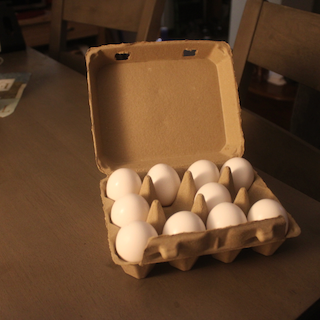The Brooding Lesson — a Glimpse of Wonder entry™ — The Waiting Curve - Series 10 of 12
 If you’ve never raised chickens, the word brooding might sound gloomy, like a stormy mood. But in the barnyard, brooding means something tender and remarkable. It’s when a hen, after laying her clutch of eggs, settles herself over them, wings spread, body heat steady, eyes watchful. She gives herself to the task of bringing life forward.
If you’ve never raised chickens, the word brooding might sound gloomy, like a stormy mood. But in the barnyard, brooding means something tender and remarkable. It’s when a hen, after laying her clutch of eggs, settles herself over them, wings spread, body heat steady, eyes watchful. She gives herself to the task of bringing life forward.
Here’s the part I didn’t know until I first researched it: a hen lays about one egg per day, and she won’t begin brooding until her nest is nearly complete. If she plans to hatch ten chicks, that takes ten days of laying. But the first egg doesn’t begin to grow the moment it’s laid. It waits. Inside that shell, life is on pause until the warmth of the hen’s body surrounds it. Only then does development begin — so that when hatch day finally comes, the chicks break free within hours of each other.
That pause is astonishing. The fertilized egg doesn’t spoil during those days in the nest. Scientists say the mother’s body prepares it with protective proteins and balances, allowing it to stay viable for about a week, sometimes a little more. Then, when her body heat wraps around the eggs, the signal is clear: now is the time. All together, they begin. All together, they end.
What about us? Am I busy producing output, achievements, things that look good from the outside, but unwilling to sit still and nurture what really matters? Or am I willing to brood — to pause, to protect, to stay steady even when nothing seems to be happening?
Jehovah values the faithful brooder. He calls us to perseverance, not just production. Paul reminded the congregation: “Let us not give up in doing what is fine, for in due time we will reap if we do not tire out.” — Galatians 6:9 (NWT)
Life in His service often feels like waiting on eggs that don’t seem to change. But then His warmth touches them — and suddenly growth that was invisible bursts into life.
References
-
National Chicken Council. 2020. Standard Laying Patterns and Clutch Size in Domestic Hens. Poultry Science Journal.
-
Love, J., et al. 2018. “Egg Viability and Embryonic Pause During the Preincubation Period.” Poultry Science Reports 47(3): 205–212.
-
Romanoff, A. L., and A. J. Romanoff. 1949. The Avian Embryo: Structural and Functional Development. Macmillan.
-
North, M. O., and D. D. Bell. 1990. Commercial Chicken Production Manual. AVI Publishing.
-
Jones, D. R. 2004. “Synchrony of Hatching: A Reproductive Strategy in Birds.” Journal of Avian Biology 35(5): 501–508.
Edited by Qapla
- Roxessence and Pikachu
-
 1
1
-
 1
1

0 Comments
Recommended Comments
There are no comments to display.
Join the conversation with your brothers and sisters!
You are posting as a guest. If you are already a member, sign in now to post with your existing account.
Note: Your post will require moderator approval before it will be visible.